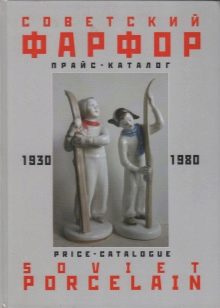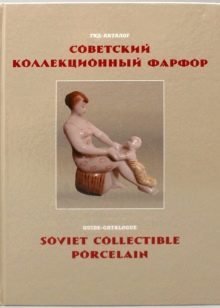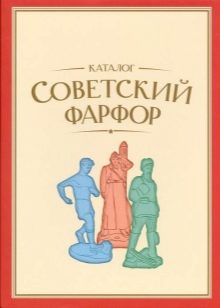All about the statuettes of the USSR
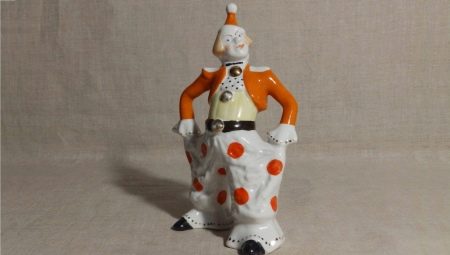
A distinctive feature of the decor of Soviet apartments was the obligatory presence of decorative figurines. Wooden, cast-iron and plaster figures adorned sideboards, tables, window sills. Despite the mass production of this consumer goods, the products looked quite worthy, because the soul, imagination and taste of the masters of their craft were invested in them. Interesting themes, sculptural authenticity and bright colors were pleasing to the eye, bringing warmth and soulful atmosphere to the owners.
Porcelain miniatures were especially chic. They stood out for their sophistication and high quality workmanship. That is why the figurines of the USSR are still attracting attention and are popular among the population. The types of such products, their features, as well as the most rare rare items will be discussed in the article.

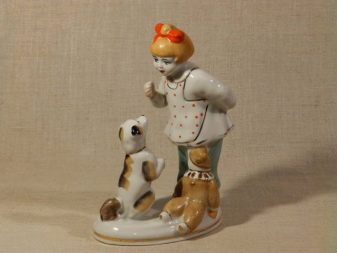
Peculiarities
The first years of Soviet power were marked by devastation. It affected large enterprises, large factories and factories, as well as small manufacturers involved in the production of miniature figurines. The revolution changed the attitude of people towards a variety of household items. During this period, figurines in the form of cats standing on dressers were considered to be philistine.
However, very soon the country's leaders realized that even these philistine excesses can act as bearers of a new culture and ideology. Gradually, this industry began to revive, which led to the appearance of statuettes from the period of the USSR. This new style of the Soviet era was called propaganda. The products produced were real works of art and were of interest to the public and collectors.
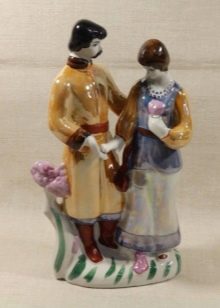
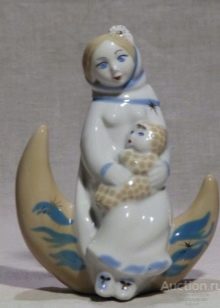
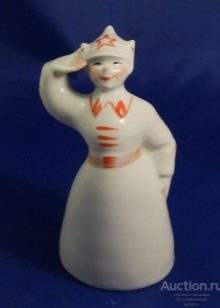
The figurines were also made from a variety of materials. More often it was possible to see products:
- porcelain;
- cast iron;
- made of metal;
- clay.
The peculiarity of the statuettes of this period was their use to promote the Soviet way of life.
At this time, the hands of talented sculptors began to create busts of leaders and commanders, poets and writers, athletes and leaders of production, as well as workers and peasants.
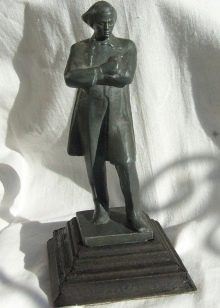
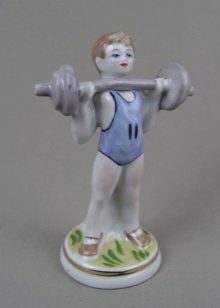
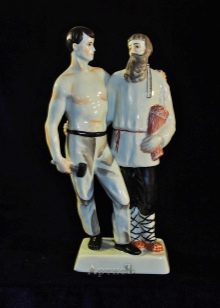
The touching figures of children personified a happy childhood in the land of the Soviets. The images of the athletes celebrated beauty and physical perfection, promoting healthy lifestyles. The sculptures of warrior heroes were intended to instill love for the Fatherland, to foster patriotism.
Besides, a feature of the products is their highest quality, grace and nobility. Today, statuettes of the USSR, made at different factories, with and without a stigma, are the object of desire of many connoisseurs and the object of attention of collectors.
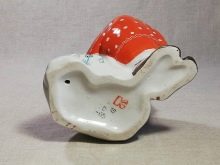
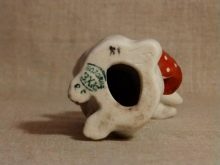
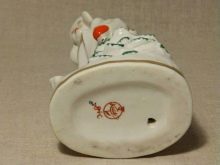
Overview of topics
The statuettes of the Soviet period were distinguished by a huge variety of subjects. It is worth considering their main topics.
- Historical motives. Such works include busts of politicians, writers, military leaders. During this period, small figurines depicting equestrian and foot knights, warriors of past times were especially popular.
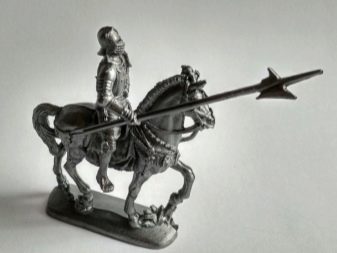
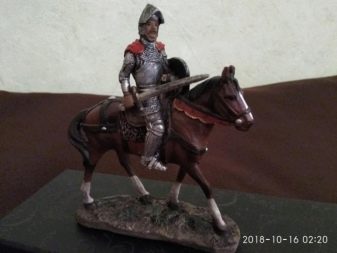
- Fairy tale characters. These are the most common subjects for figurines. Many Soviet residents could see compositions depicting the Snow Maiden and Santa Claus, Ivan Tsarevich and the Gray Wolf, as well as the Cockerel - the Golden scallop, the fox and the crane. With the advent of cartoons, new characters have become frequent guests. Crocodile Gena and Cheburashka, as well as other cartoon characters, became the most popular characters of that period.
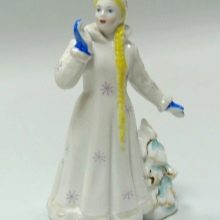
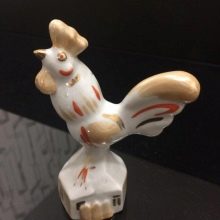
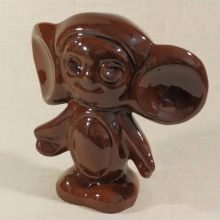
- Sports. Considering that a healthy lifestyle was considered preferable, most of the people were involved in sports. That is why many of them could see figurines on this theme. A graceful figure skater, a porcelain footballer or hockey player, as well as a skier or rider on a horse were almost indispensable attributes. Everyone could choose for themselves or as a gift a sculpture close to their profession or hobby.

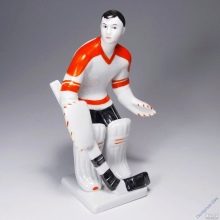

- Animalistic focus. Cute and touching animals were a favorite theme for figurine making. Bear, horse, goose and fish were especially preferred. Many people liked the smart-eyed shepherd or the rearing horse, as well as the sparkling white penguins or the long-necked giraffe.
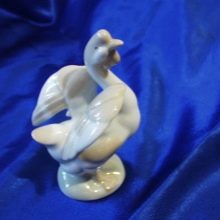

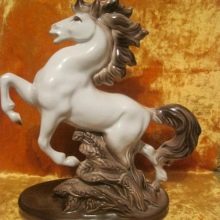
- Models depicting people. Usually statuettes of that time were dedicated to heroes of labor, scientists and ordinary people. A gypsy woman in a colorful dress, a dancer in a tutu on pointe shoes, a woman with a child in her arms, or a girl in a pioneer tie often decorated the rooms and offices of Soviet people.
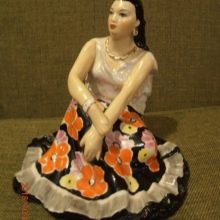

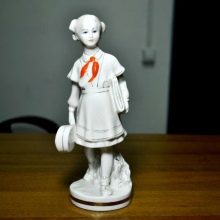
- Symbols. Such items were often dedicated to holidays, important cultural and sports events. Thus, the Olympic bear became the symbol of the 1980 Moscow Olympics.
Figures of this funny bear were bought with pleasure by guests and residents of the capital.
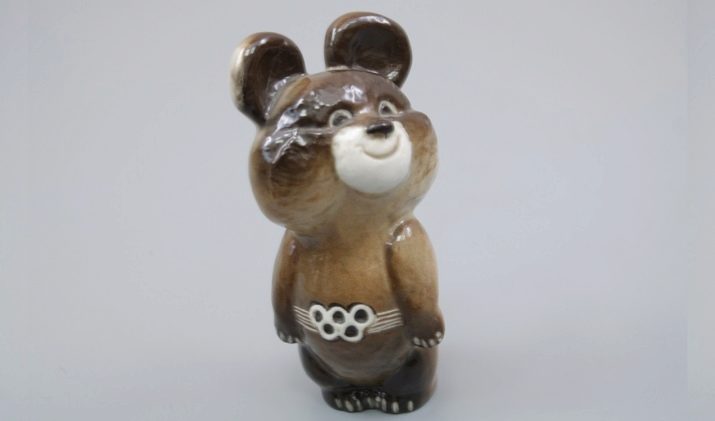
Oriental theme became one of the directions. The porcelain dragon, figurines of elephants, snakes or zodiac signs were also very popular.
Some of the figurines were created abstract, and some were dedicated to specific characters, such as the famous miniature "The Dying Swan"dedicated to the great ballerina Galina Ulanova.
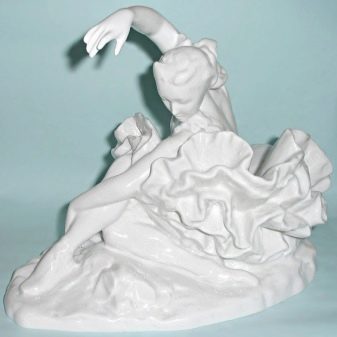
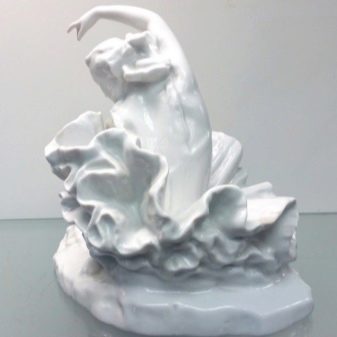
Popular manufacturers
Soviet factories offered many magnificent miniatures that were not faceless and similar to one another. Each product had its own characteristic features. It was easy to determine where the product was produced by the details of the composition, colors, and manner of manufacturing.
- Lomonosov plant. For many years this Leningrad plant was considered the leader of the industry, the company No. 1. The fame of his products resounded throughout the country and abroad.Expensive sets and figurines for prominent personalities and foreign diplomats were made within the factory walls. Most of the items were piece. Some of them are kept in museums around the world. Even today, they are of interest to collectors. A distinctive feature of the products of the Lomonosov Porcelain Factory is its nobility, consummation, and impeccable workmanship.
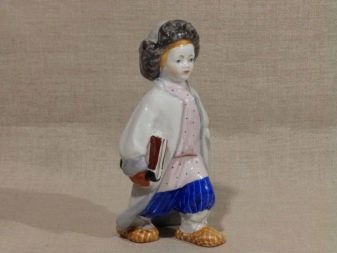

- Baranovsky plant. Its products perfectly correspond to the spirit of the Soviet era. The works are imbued with optimism, respect for working people, faith in a bright future. Figurines are capable of surprisingly influencing a person, evoking warm positive feelings.


- Bronnitsky Porcelain Factory. Figures by unknown authors of this factory are now valuable objects of collectors' attention. These works carry Old Russian and Novgorod motives.
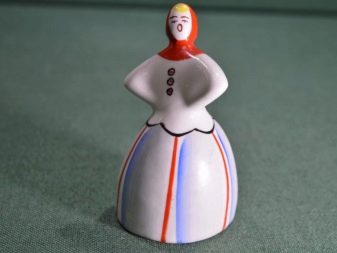
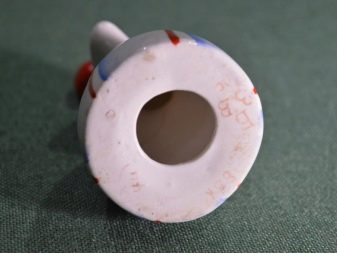
- Gzhel plant. This enterprise is a golden page in the history of ceramics. Its products of the Soviet period remain unrivaled today.

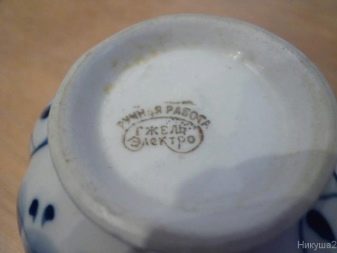
In addition to these factories, there were others, for example, Kiev, Riga, Yerevan, Korosten, Chudovsky porcelain factories.
In Soviet times, they produced wonderful, unique products that are now of historical value.
The most expensive figurines
Statuettes of the Soviet period are in demand among domestic and foreign collectors. Prices for well-preserved specimens can range from a few tens to several thousand dollars. Depends on the cost of products from the manufacturer, the name of the master, or how rare the specimen is.
The most expensive figurines are:
- the work of 1950 called "The Mare";
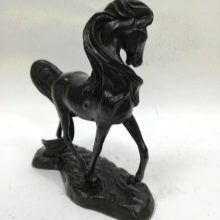
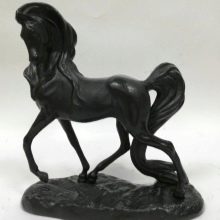
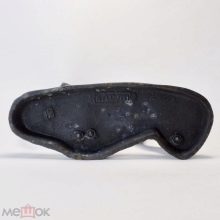
- composition in 1950 with the Mistress of the Copper Mountain;

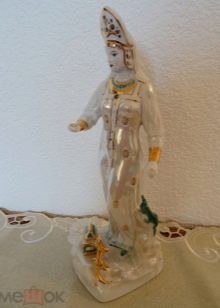
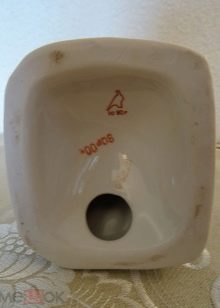
- a 1950 statuette depicting Solokha and a clerk;
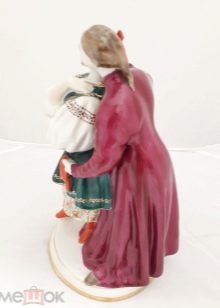

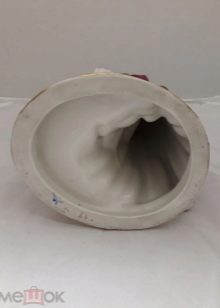
- miniature from 1953 depicting a peasant playing cards with a devil;
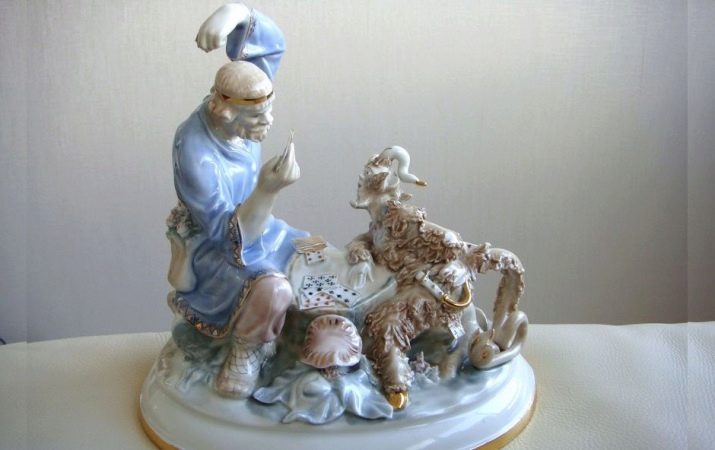
- creation of the 1960s - "Pioneer with a Rabbit";

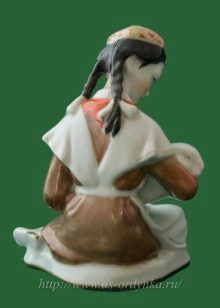
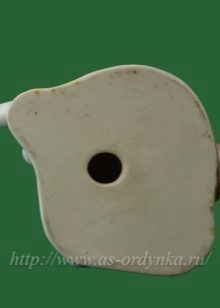
- product of 1963 depicting Alyonushka and brother Ivanushka.
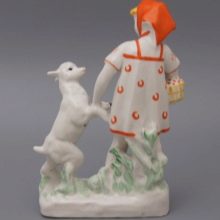
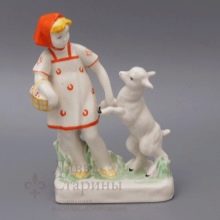
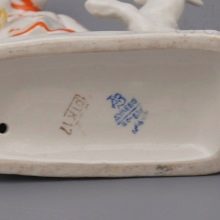
The list goes on. So, at the Ebay auction, the proposed lots with figurines were sold for the following amounts:
- "Goalkeeper" for $ 34;
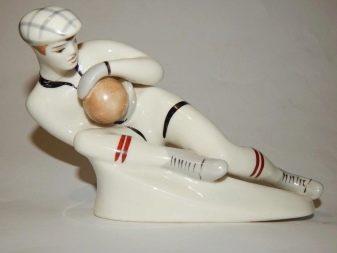
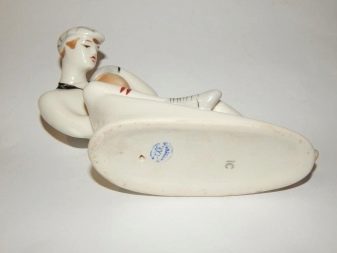
- "Mom and Child" for $ 45;

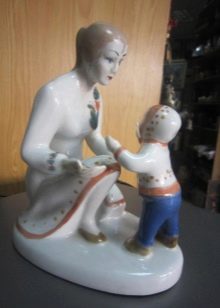
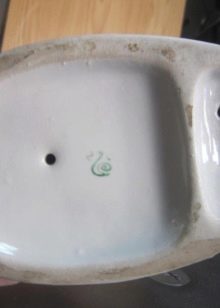
- "Boy on a Horse" for $ 50;
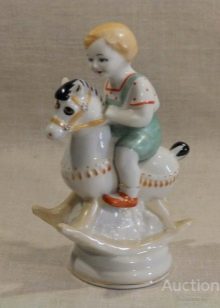
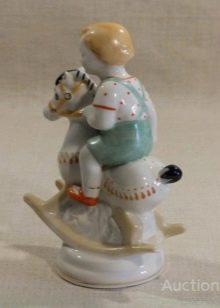
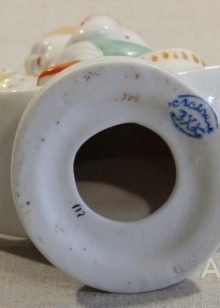
- "Boy with a Toy" for $ 90;
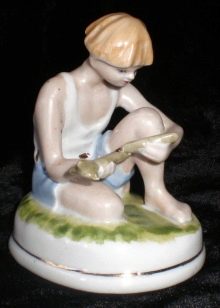

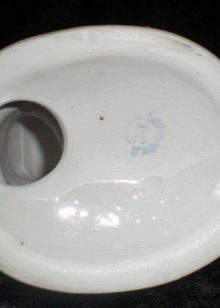
- The Photographing Sailor for $ 149;
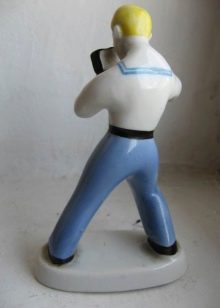
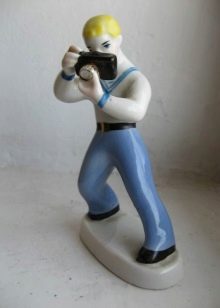

- "Chapaeva" for $ 250.
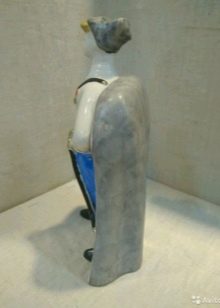

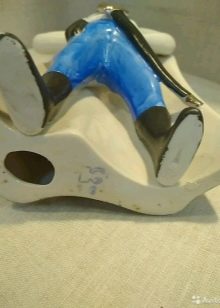
And this is not a record. The cost of the famous "Turchanka" is 100 times higher. This is explained by the great rarity of this work. The fact is that the statuette depicts an oriental girl reading a newspaper. Several copies of the newspaper bore the name of L. Trotsky. After this policy was declared an enemy of the people, most of the finished products were destroyed, and the remaining copies became an expensive rarity.
Collectors are most interested in figurines reflecting the spirit of the Soviet era with the image of workers, ballerinas, and children of the country. The list and cost of these products can be found in the catalogs dedicated to the figurines of the USSR.
